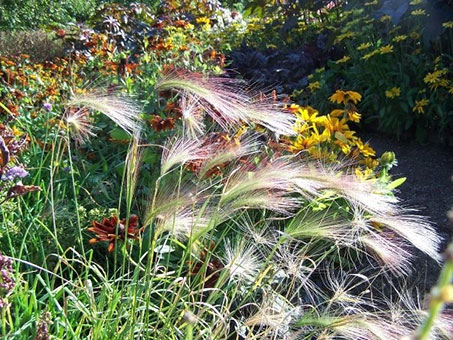Part 4: Planting design
8. Use of texture
The leaves, flowers and stems of a plant give it texture.
Leaf shape gives interest and the leaf itself may be either hard and glossy or soft and matt giving further interest. Some plants are chosen for their leaf shape and leaf interest alone. Some leaves are soft and downy and some are rough and hairy. Spiky leaves have a texture of rough edges and sharp points compared to rounded leaves that have a texture that is soft and uniform. Many leaves have an underside that is different to the top surface and this adds another level of texture, especially when the wind is strong enough to blow the plant so that the underside is visible.
All textures are of great use when considering planting design, as the texture is both visual and tactile. Tactile planting for a sensory garden is of utmost importance alongside fragrance, where people are encouraged to touch the plants.
Plants with soft and fluffy textures look great for prairie planting, cottage gardens and informal gardens:



Amber Crowley / public domain
Plants with large leaves have a great texture for jungle style planting:


Amber Crowley / public domain
Do an internet image search for the following types of garden planting style, paying particular attention to the texture of the plants used within them:
- Formal garden planting
- Architectural garden planting
- Prairie garden planting